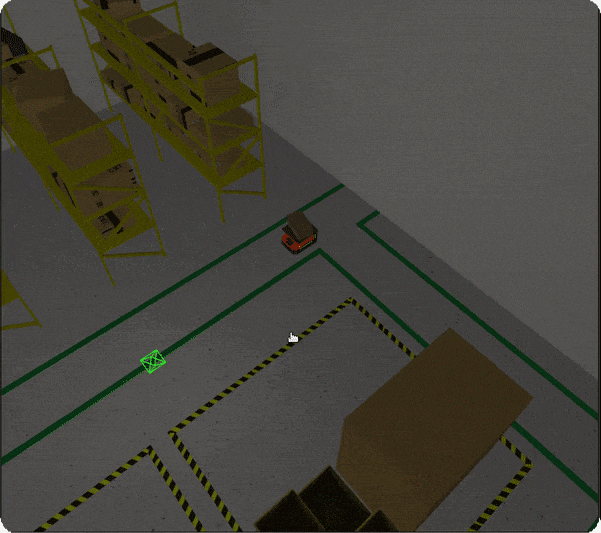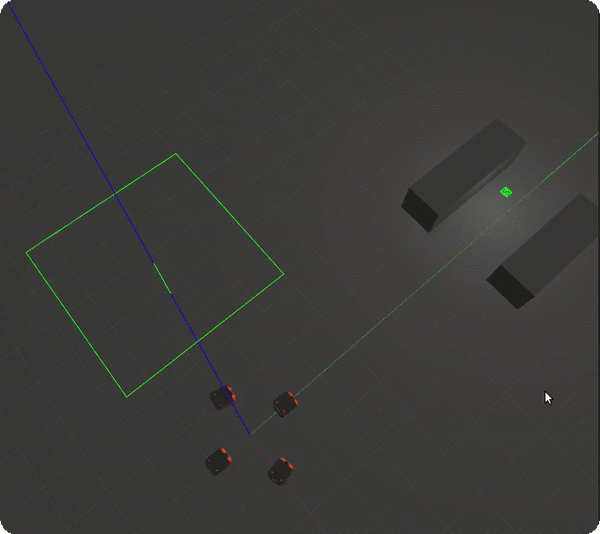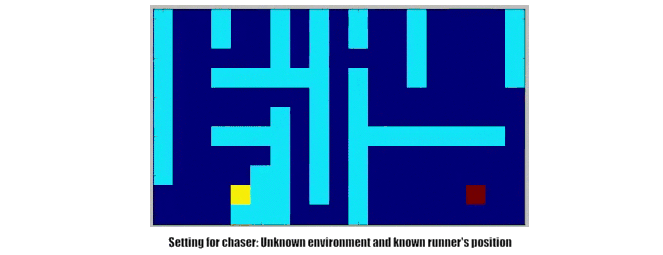I am Vivek Adajania, a Robotics Software Engineer at Addverb Technologies, Toronto, Canada. I am responsible for developing, implementing and deploying warehouse fleet management algorithms. I completed a Master of Applied Science under Prof. Angela Schoellig at the University of Toronto. I worked on online and scalable algorithms for safe multi-robot motion planning in cluttered and complex environments. The algorithmic developments in my thesis culminated in two research papers published at the ICRA'23 and ICRA'24 conferences. Moreover, the open-source C++ codes have been fruitful to the robotics community. Before my Masters, I worked under Prof. K Madhava Krishna and Prof. Arun K. Singh at the University of Tartu on trajectory optimization for self-driving vehicles and fixed-wings.
[Google Scholar |Linkedin | Github]
Projects
Safe Multi-Robot motion planning
Online, scalable, distributed, and safe trajectory generation algorithm for quadrotor swarms in cluttered and complex environments. Multi-Modal MPC for autonomous driving
Research Project: Developed a real-time MPC algorithm that captures different driving modalities by generating several goal-directed trajectories in parallel; the resulting trajectories are ranked based on a meta-cost function to accomplish a high-level driving objective. Fixed-Wing-Aerial Vehicle Trajectory Optimization in Urban Settings
Occlusion-Free Target Tracking with Quadrotors
Research Project: Developed a fast MPC algorithm that can run real-time laptops and devices such as Jetson TX2 for the problem of quadrotor tracking a target. Our approach relies on novel reformulations for the tracking, collision, and occlusion constraints that induce a multi-convex structure in the resulting trajectory optimization. We exploit these mathematical structures using the split Bregman Iteration technique, eventually reducing our MPC to a series of convex Quadratic Programs solvable in a few milliseconds. Multi-Robot System for Warehouse application
Asia-Pacific Robot Contest
Planning Techniques
Personal Project: Followed RI16-730 Planning techniques in Robotics and implemented planners such as A*, ARA*, D*, Wave front planner, navigation potential functions, etc. Moreover, wrote blogs🔗 on implementation and results.
Research Project: Developed a novel optimizer which exploits the computational structure of the non-linear trajectory optimization problem. Our optimizers builds an insight that the seemingly non-linear trajectory optimization has an implicit multi-convex structure. It outperforms the state-of-the-art implementation of SQP ACADO Toolkit in terms of computation time and solution quality.
Final Year Project: Developed a multi-robot navigation system by incorporating diverse concepts and algorithms such as distributed model predictive control, A* search algorithm, On-demand Collision Avoidane, and Leader-Follower formation scheme. The problem statement was divided into three parts: single-robot navigation, multi-robot navigation, multi-robot cooperation to transport a deformable object. We validated and tested algorithms in Gazebo environment.


Competition: Developed an autonomous navigation system for Omni-directional robots from its embedded system to motion planning and control.

Robot Chasing a Target